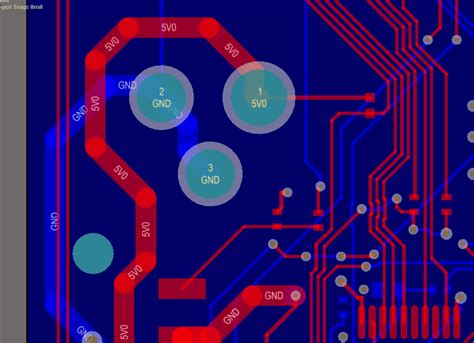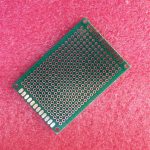Introduction to Telecom PCB Design
Telecom PCB design is a critical aspect of modern telecommunications systems. Printed Circuit Boards (PCBs) are the backbone of electronic devices, providing the necessary interconnections and support for various components. In the telecom industry, PCBs play a vital role in enabling reliable and efficient communication networks. Designing telecom PCBs requires careful consideration of several factors to ensure optimal performance, reliability, and compliance with industry standards.
In this article, we will delve into the key considerations for telecom PCB design, including signal integrity, power management, electromagnetic compatibility (EMC), thermal management, and manufacturing considerations. By understanding and addressing these factors, designers can create robust and efficient PCBs that meet the demanding requirements of telecom applications.
Signal Integrity in Telecom PCB Design
Understanding Signal Integrity
Signal integrity is a crucial consideration in telecom PCB design. It refers to the ability of a PCB to maintain the quality and integrity of electrical signals as they propagate through the board. In telecom systems, high-speed digital signals and sensitive analog signals are common, and ensuring their integrity is essential for reliable communication.
Factors Affecting Signal Integrity
Several factors can impact signal integrity in telecom PCBs:
-
Impedance matching: Proper impedance matching is necessary to minimize reflections and signal distortions. Mismatched impedances can lead to signal degradation and reduced performance.
-
Crosstalk: Crosstalk occurs when signals from one trace interfere with adjacent traces. It can be minimized by proper trace spacing, using ground planes, and implementing shielding techniques.
-
Transmission line effects: As signal frequencies increase, the traces on a PCB behave like transmission lines. Designers must consider the characteristic impedance and propagation delay to ensure signal integrity.
-
Jitter and skew: Jitter refers to the variation in the timing of signal transitions, while skew is the difference in arrival times of related signals. Both can impact signal integrity and must be minimized.
Techniques for Improving Signal Integrity
To improve signal integrity in telecom PCB design, designers can employ various techniques:
-
Proper trace routing: Traces should be routed with controlled impedance and minimized discontinuities. Avoid sharp bends and maintain consistent trace widths.
-
Ground planes: Using solid ground planes helps to reduce crosstalk and provide a stable reference for signals. They also improve EMC performance.
-
Differential signaling: Differential signaling techniques, such as LVDS (Low-Voltage Differential Signaling), can help to reduce noise and improve signal integrity.
-
Termination techniques: Proper termination techniques, such as series termination and parallel termination, can help to minimize reflections and improve signal quality.
Power Management in Telecom PCB Design
Importance of Power Management
Power management is a critical aspect of telecom PCB design. Telecom systems often require multiple voltage levels and currents to power various components. Efficient power management ensures stable and reliable operation of the system while minimizing power consumption and heat generation.
Power Distribution Network (PDN) Design
The power distribution network (PDN) is responsible for delivering power to all the components on a PCB. Designing an effective PDN involves the following considerations:
-
Power plane design: Power planes should be designed to minimize voltage drops and ensure uniform power distribution across the board.
-
Decoupling capacitors: Decoupling capacitors are used to reduce noise and provide a stable power supply to components. Proper placement and selection of decoupling capacitors are crucial.
-
Power integrity analysis: Power integrity analysis helps to identify potential issues such as voltage drops, current density, and power supply noise. Simulation tools can be used to optimize the PDN design.
Power Regulation and Filtering
To ensure stable and clean power supply to components, telecom PCBs often incorporate power regulation and filtering techniques:
-
Voltage regulators: Voltage regulators, such as linear regulators and switching regulators, are used to convert and stabilize voltage levels for different components.
-
Power filtering: Power filtering techniques, such as ferrite beads and LC filters, help to reduce high-frequency noise and ripple on power supply lines.
-
Power sequencing: In complex systems with multiple power domains, power sequencing is necessary to ensure proper startup and shutdown of components.

Electromagnetic Compatibility (EMC) in Telecom PCB Design
Understanding EMC
Electromagnetic compatibility (EMC) refers to the ability of an electronic device to operate properly in its electromagnetic environment without causing or being susceptible to electromagnetic interference (EMI). In telecom PCBs, EMC is critical to ensure reliable communication and compliance with regulatory standards.
EMI Sources and Coupling Mechanisms
EMI can originate from various sources, such as switching power supplies, high-speed digital circuits, and RF components. EMI can couple into a PCB through different mechanisms:
-
Conducted EMI: Conducted EMI propagates through physical connections, such as power lines and signal traces.
-
Radiated EMI: Radiated EMI propagates through the air as electromagnetic waves and can couple into the PCB through antennas or apertures.
EMC Design Techniques
To mitigate EMI and ensure EMC compliance, telecom PCB designers can employ several techniques:
-
Shielding: Shielding techniques, such as metal enclosures and ground planes, can help to contain and attenuate EMI.
-
Grounding and bonding: Proper grounding and bonding techniques, such as using low-impedance ground connections and minimizing ground loops, can reduce EMI coupling.
-
Filtering: EMI filters, such as LC filters and ferrite beads, can be used to suppress conducted EMI on power lines and signal traces.
-
Layout techniques: Careful PCB layout techniques, such as separating sensitive circuits from noisy circuits and minimizing loop areas, can help to reduce EMI coupling.
Thermal Management in Telecom PCB Design
Importance of Thermal Management
Thermal management is a critical consideration in telecom PCB design. Electronic components generate heat during operation, and excessive heat can lead to performance degradation, reliability issues, and even component failure. Effective thermal management ensures that components operate within their specified temperature ranges.
Thermal Design Considerations
Thermal design in telecom PCBs involves several considerations:
-
Component placement: Components should be placed in a way that promotes efficient heat dissipation. High-power components should be located near the edges or in areas with good airflow.
-
Thermal vias: Thermal vias are used to transfer heat from components to the PCB’s internal or external layers. They help to spread the heat and improve thermal conductivity.
-
Heatsinks and cooling solutions: Heatsinks and other cooling solutions, such as fans or liquid cooling, can be used to dissipate heat from high-power components.
Thermal Simulation and Analysis
Thermal simulation and analysis tools are valuable in telecom PCB design. These tools allow designers to predict the thermal behavior of the PCB and identify potential hotspots. By performing thermal simulations, designers can optimize component placement, cooling solutions, and PCB stackup for effective thermal management.
Manufacturing Considerations in Telecom PCB Design
Design for Manufacturability (DFM)
Design for manufacturability (DFM) is an essential aspect of telecom PCB design. DFM involves designing the PCB in a way that facilitates efficient and reliable manufacturing processes. By considering manufacturing constraints and guidelines early in the design phase, designers can avoid potential issues and ensure a smooth transition to production.
PCB Fabrication and Assembly
Telecom PCBs often have specific requirements for fabrication and assembly:
-
High-density interconnect (HDI): HDI PCBs are commonly used in telecom applications due to their ability to accommodate high component density and complex routing. Designers must adhere to HDI design guidelines.
-
Controlled impedance: Telecom PCBs often require controlled impedance traces to maintain signal integrity. Manufacturers must have the capability to fabricate PCBs with tight impedance tolerances.
-
Surface mount technology (SMT): SMT is widely used in telecom PCB assembly due to its efficiency and reliability. Designers must consider SMT design rules, such as component spacing and pad sizes.
Testing and Validation
Thorough testing and validation are crucial for telecom PCBs to ensure functionality, reliability, and compliance with industry standards. Common testing methods include:
-
In-circuit testing (ICT): ICT verifies the proper assembly and functionality of individual components on the PCB.
-
Functional testing: Functional testing validates the overall performance and functionality of the assembled PCB.
-
Environmental testing: Environmental testing, such as temperature cycling and vibration testing, ensures the PCB can withstand the expected operating conditions.
FAQs
1. What are the key considerations for signal integrity in telecom PCB design?
The key considerations for signal integrity in telecom PCB design include impedance matching, crosstalk mitigation, transmission line effects, and jitter and skew minimization. Techniques such as proper trace routing, ground planes, differential signaling, and termination can help improve signal integrity.
2. Why is power management important in telecom PCB design?
Power management is important in telecom PCB design because telecom systems often require multiple voltage levels and currents to power various components. Efficient power management ensures stable and reliable operation of the system while minimizing power consumption and heat generation. Proper power distribution network design, power regulation, and filtering techniques are crucial for effective power management.
3. What is electromagnetic compatibility (EMC), and how can it be addressed in telecom PCB design?
Electromagnetic compatibility (EMC) refers to the ability of an electronic device to operate properly in its electromagnetic environment without causing or being susceptible to electromagnetic interference (EMI). EMC can be addressed in telecom PCB design through techniques such as shielding, grounding and bonding, filtering, and careful layout practices.
4. How can thermal management be effectively implemented in telecom PCB design?
Thermal management in telecom PCB design can be effectively implemented through proper component placement, the use of thermal vias, and the incorporation of heatsinks and cooling solutions. Thermal simulation and analysis tools can help predict thermal behavior and optimize the design for effective heat dissipation.
5. What are the manufacturing considerations for telecom PCBs?
Manufacturing considerations for telecom PCBs include design for manufacturability (DFM), PCB fabrication and assembly capabilities, and thorough testing and validation. Designers must consider factors such as high-density interconnect (HDI) design rules, controlled impedance requirements, and surface mount technology (SMT) guidelines to ensure efficient and reliable manufacturing processes.
Conclusion
Telecom PCB design is a complex and multifaceted process that requires careful consideration of various factors to ensure optimal performance, reliability, and compliance with industry standards. Key considerations include signal integrity, power management, electromagnetic compatibility (EMC), thermal management, and manufacturing considerations.
By understanding and addressing these factors, designers can create robust and efficient PCBs that meet the demanding requirements of telecom applications. Proper design techniques, simulation tools, and adherence to industry guidelines can help overcome challenges and ensure successful telecom PCB designs.
As the telecom industry continues to evolve with the advent of new technologies and increasing bandwidth demands, PCB designers must stay up to date with the latest design practices and standards. By prioritizing signal integrity, power management, EMC, thermal management, and manufacturability, designers can contribute to the development of advanced telecom systems that enable reliable and efficient communication networks.






Leave a Reply